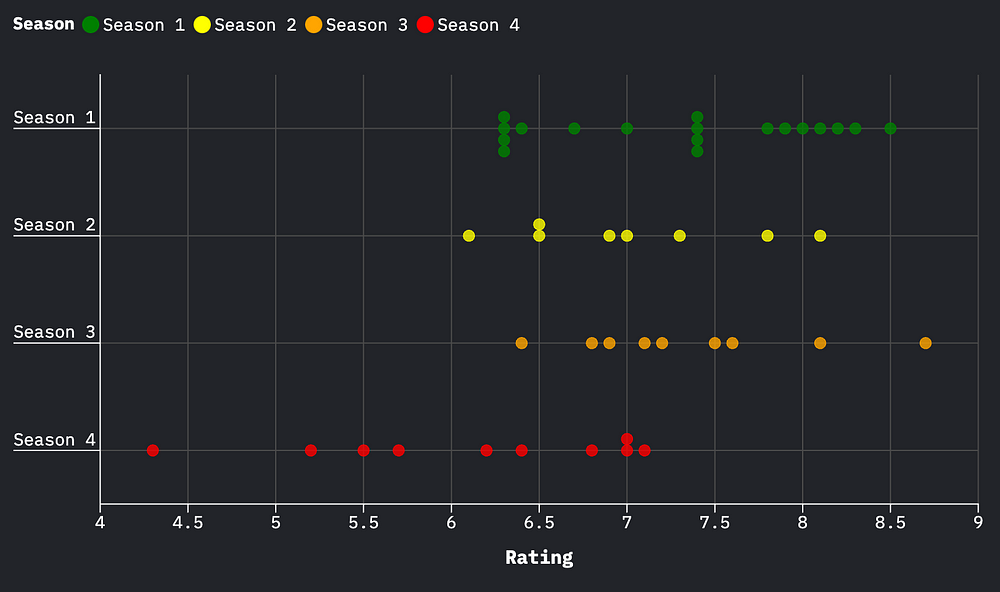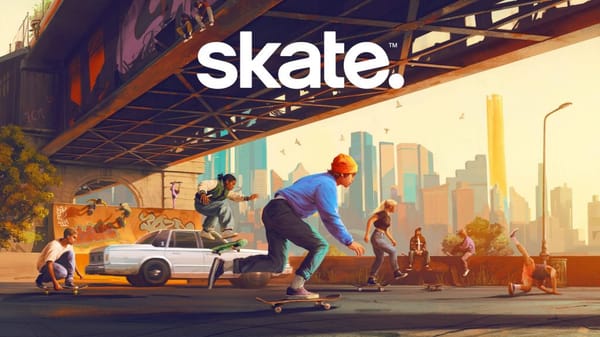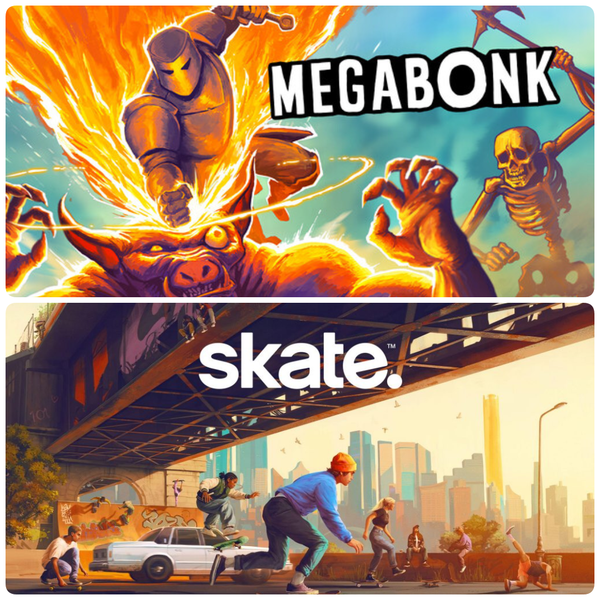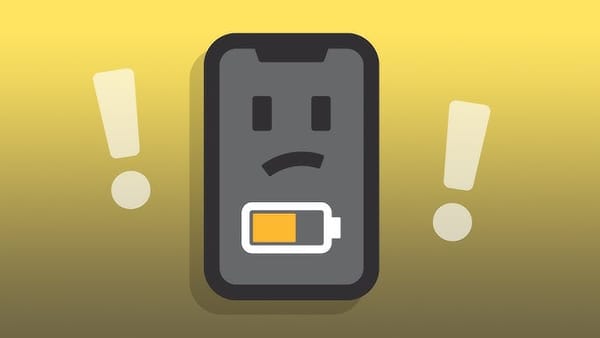Love, Death & Robots Season Four: Cats, Religion & Cameos?
A season once defined by bold storytelling now leans on cats, cameos, and hollow echoes of its past. Here’s what went wrong with Season 4.

Season 4 of Love, Death & Robots was quietly released on May 15, 2025, slipping under the radar with minimal promotion or anticipation.
Usually, Netflix is quick to alert viewers with emails or targeted ads, but this time around, the release felt almost secretive.
Perhaps my distance from streaming services has influenced this perspective, but that’s another discussion entirely how streaming services have spiraled out of control.
For now, let’s address the issue at hand: critiquing Season 4 not just for the sake of being cynical, but to highlight a deeper issue pervasive in today’s entertainment industry, repackaging mediocrity and selling it back as innovation.
Season 4 Overview
If we attempt to weigh the pros against the cons, the positives are scarce. The primary draw might simply be nostalgia, the brief excitement of revisiting a beloved franchise.
Yet, stepping past initial enthusiasm and diving into the season quickly reveals an unsettling emptiness.
Sure, the visuals and production quality maintain the standard fans expect, but praising the show for having solid animation is akin to celebrating water for being wet.
To support this critique, I’ve also created a visual comparison of episode ratings across all four seasons.
The graphic clearly shows how Season 4 not only falls short in episode count but also struggles to maintain an average rating above 7. It’s a visual confirmation of what fans are feeling: this season simply doesn’t hold up.

Season 4 Episode Reviews
Episode 1 (4.2) Can’t Stop: This episode feels like an outtake from a Red Hot Chili Peppers fever dream. It’s essentially a puppet-filled music video, loosely synced to the song “Can’t Stop.” The visuals are quirky but lack any depth or context. There’s no story here, no narrative arc, just chaotic stunts and random puppet antics. It’s filler masquerading as art.
Episode 2 (6.8) Close Encounters of the Mini Kind: A return to the miniature apocalypse theme introduced in Season 3’s Night of the Mini Dead. This episode borrows its style entirely from that predecessor, but without any clever twists or upgrades. It’s not a sequel, not an expansion, just the same gimmick reused. The charm that made the original fun feels diluted here.
Episode 3 (7.0) Spider Rose: Among the more promising episodes of the season, but ultimately, it never pays off. It follows a familiar formula: revenge, cybernetic enhancements, and emotional trauma. Fans of Season 1’s Sonnie’s Edge will feel an odd sense of déjà vu, as this episode nearly mirrors its themes and visual aesthetic. It doesn’t push boundaries, it just replays them.
Episode 4 (5.8) 400 Boys: Shot in a style that closely resembles Season 2’s Pop Squad, this episode stumbles through a murky narrative about divine punishment and survival. The world-building is weak, the characters are forgettable, and the plot is stitched together from clichés. It’s the first episode to hint at the religious undertones that permeate the rest of the season, but it lacks substance.
Episode 5 (7.0) The Other Large Thing: The first of two cat-themed episodes, and the most perplexing. Chris Parnell returns as the voice of a talking cat, yes, the same voice from Season 1’s Three Robots, but the character and setting appear unrelated. There are vague allusions to artificial intelligence and cooperation, but the episode moves too quickly to explore them. It feels like an unfinished thought that barely meets runtime requirements.
Episode 6 (5.2) Golgotha: Easily one of the weakest episodes, presented in live-action with almost no animation. A priest is sent to negotiate peace with an alien species. That’s the entire plot. No twist, no conflict, no development. It echoes Ice Age from Season 1, but without the charm or cleverness. It feels like an early concept that somehow made it to the final cut.
Episode 7 (6.3) The Screaming of the Tyrannosaur: This one opens with an unexpected cameo, YouTuber Mr Beast voicing the announcer. Unfortunately, it sounds exactly like that: a YouTuber reading from a script. The story itself is convoluted, with lackluster themes and odd pacing. The voice acting takes center stage, not because it’s good, but because it’s so jarringly out of place.
Episode 8 (7.1) How Zeke Got Religion: Another visually striking episode that borrows heavily from Season 3’s The Very Pulse of the Machine in both art style and structure. The narrative follows a lone survivor who, after a series of existential setbacks, turns to religion. While the themes could have been rich, the delivery is shallow. It checks all the boxes but inspires none of the awe.
Episode 9 (5.6) Smart Appliances, Stupid Owners: Claymation appliances voiced by celebrities: Kevin Hart, Ronny Chieng, Brett Goldstein, and Melissa Villaseñor, rant and joke through a loosely-structured plot. It’s more of a vanity reel than an episode. There’s no satire, no punchline, just a string of voices phoning it in. Possibly the most blatant example of style over substance in the season.
Episode 10 (6.4): A fitting end, if only because it encapsulates every flaw in one go. Cats. Religion. Cameos. Dan Stevens voices Satan in a surreal sequence where a cat, alongside other cats, tries to prevent the apocalypse? Animation is borrowed from Season 1’s Fish Night, and the plot is a fever dream of borrowed ideas. A checklist of themes without any glue holding them together.
Final Thoughts
This season barely scraped past the widely accepted average rating threshold, with only one episode marginally exceeding a 7.0.
The brief and vague summaries above practically detail entire episodes; that’s how shallow the storytelling is. Good narratives require pacing, structure, and depth, none of which were present here.
Love, Death & Robots was once praised as a beacon of innovation, originality, and bold storytelling.
Now, it appears to be just another victim of a broader trend in entertainment, a relentless descent into recycled content and superficial spectacle.
It’s disheartening to watch such a significant decline happen to a show once hailed as groundbreaking.
Conclusion
I’ll pass it over to you, readers: Did you watch Season 4, and what were your impressions? What are some series or films you’ve seen degrade dramatically over time? Lastly, considering the current state of Hollywood and streaming entertainment, is there any hope left, or are we stuck in an endless cycle of disappointment?



